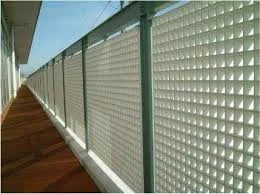
-
 Afrikaans
Afrikaans -
 Albanian
Albanian -
 Amharic
Amharic -
 Arabic
Arabic -
 Armenian
Armenian -
 Azerbaijani
Azerbaijani -
 Basque
Basque -
 Belarusian
Belarusian -
 Bengali
Bengali -
 Bosnian
Bosnian -
 Bulgarian
Bulgarian -
 Catalan
Catalan -
 Cebuano
Cebuano -
 China
China -
 China (Taiwan)
China (Taiwan) -
 Corsican
Corsican -
 Croatian
Croatian -
 Czech
Czech -
 Danish
Danish -
 Dutch
Dutch -
 English
English -
 Esperanto
Esperanto -
 Estonian
Estonian -
 Finnish
Finnish -
 French
French -
 Frisian
Frisian -
 Galician
Galician -
 Georgian
Georgian -
 German
German -
 Greek
Greek -
 Gujarati
Gujarati -
 Haitian Creole
Haitian Creole -
 hausa
hausa -
 hawaiian
hawaiian -
 Hebrew
Hebrew -
 Hindi
Hindi -
 Miao
Miao -
 Hungarian
Hungarian -
 Icelandic
Icelandic -
 igbo
igbo -
 Indonesian
Indonesian -
 irish
irish -
 Italian
Italian -
 Japanese
Japanese -
 Javanese
Javanese -
 Kannada
Kannada -
 kazakh
kazakh -
 Khmer
Khmer -
 Rwandese
Rwandese -
 Korean
Korean -
 Kurdish
Kurdish -
 Kyrgyz
Kyrgyz -
 Lao
Lao -
 Latin
Latin -
 Latvian
Latvian -
 Lithuanian
Lithuanian -
 Luxembourgish
Luxembourgish -
 Macedonian
Macedonian -
 Malgashi
Malgashi -
 Malay
Malay -
 Malayalam
Malayalam -
 Maltese
Maltese -
 Maori
Maori -
 Marathi
Marathi -
 Mongolian
Mongolian -
 Myanmar
Myanmar -
 Nepali
Nepali -
 Norwegian
Norwegian -
 Norwegian
Norwegian -
 Occitan
Occitan -
 Pashto
Pashto -
 Persian
Persian -
 Polish
Polish -
 Portuguese
Portuguese -
 Punjabi
Punjabi -
 Romanian
Romanian -
 Russian
Russian -
 Samoan
Samoan -
 Scottish Gaelic
Scottish Gaelic -
 Serbian
Serbian -
 Sesotho
Sesotho -
 Shona
Shona -
 Sindhi
Sindhi -
 Sinhala
Sinhala -
 Slovak
Slovak -
 Slovenian
Slovenian -
 Somali
Somali -
 Spanish
Spanish -
 Sundanese
Sundanese -
 Swahili
Swahili -
 Swedish
Swedish -
 Tagalog
Tagalog -
 Tajik
Tajik -
 Tamil
Tamil -
 Tatar
Tatar -
 Telugu
Telugu -
 Thai
Thai -
 Turkish
Turkish -
 Turkmen
Turkmen -
 Ukrainian
Ukrainian -
 Urdu
Urdu -
 Uighur
Uighur -
 Uzbek
Uzbek -
 Vietnamese
Vietnamese -
 Welsh
Welsh -
 Bantu
Bantu -
 Yiddish
Yiddish -
 Yoruba
Yoruba -
 Zulu
Zulu
grp boat
Exploring the Intriguing World of GRP Boats
In the fascinating realm of maritime craftsmanship, Glass Reinforced Plastic (GRP) boats stand out for their exceptional durability, versatility, and performance. These boats, which are increasingly prevalent in both recreational and commercial sectors, offer a myriad of benefits that have earned them a loyal following among boating enthusiasts and professionals alike.
The Basics What is GRP?
GRP, or Glass Reinforced Plastic, is a composite material made by combining glass fibers with a resin, which creates a strong, lightweight, and water-resistant substance. This mixture can be molded into various shapes, making it highly suitable for boat construction. The use of GRP dates back to the mid-20th century when advancements in manufacturing processes and materials led to the development of stronger and more flexible alternatives to traditional wood and metal boats.
Advantages of GRP Boats
One of the most significant advantages of GRP boats is their resistance to corrosion and rot. Unlike wooden boats, which can succumb to moisture damage over time, GRP boats are largely immune to the effects of saltwater, freshwater, and even some chemical exposures. This durability means less maintenance and a longer lifespan, which is particularly appealing to boat owners looking to reduce the total cost of ownership.
Moreover, GRP boats are relatively lightweight compared to their fiberglass and aluminum counterparts. This characteristic not only enhances fuel efficiency but also makes them easier to handle during transport and storage. The lightweight nature of GRP allows for better speed and agility on the water, adding to their appeal for both recreational boating and competitive racing.
Sustainability and Innovation
grp boat

Another significant aspect of GRP boats is their adaptability to modern sustainability practices. Manufacturers are increasingly looking into eco-friendly resins and recycling methods that lessen the environmental impact of boat production. The introduction of bio-based resins and initiatives for recycling old GRP boats are paving the way for a more sustainable future in maritime craftsmanship.
Innovations in GRP technology have also led to improvements in performance. Advanced molding techniques and the incorporation of features like infused foam cores have made GRP boats not only faster but also more stable. These advancements are crucial for sailboats, fishing vessels, and leisure craft that require reliability under varying conditions.
Types of GRP Boats
GRP boats come in various forms, each tailored to meet specific needs. From motorboats and sailboats to catamarans and yachts, the versatility of GRP allows for a wide range of designs and functionalities. Sailboats crafted from GRP offer excellent stability and speed while enabling precise maneuverability, making them favorites among sailing aficionados. On the other hand, GRP motorboats, whether for fishing, cruising, or water sports, benefit from reduced drag and enhanced performance, providing exhilarating experiences on the water.
The Future of GRP Boats
As the demand for recreational boating continues to grow, so does the potential for GRP boat technology. The industry is witnessing an upswing in interest from millennials and younger generations seeking leisure activities that promote a connection with nature. This trend is likely to drive further innovations in design, comfort, and environmental sustainability.
In conclusion, GRP boats represent a significant achievement in boat manufacturing, combining strength, agility, and longevity. Their favorable characteristics make them an ideal choice for anyone looking to invest in a reliable vessel. As we move forward, the integration of sustainable practices and ongoing developments promise a bright future for GRP boats, ensuring they remain a cherished choice in the world of boating for years to come. Whether you are a seasoned sailor or a newcomer to the boating community, the allure of GRP boats is undeniable, inviting all to explore the wonders of the open water.









